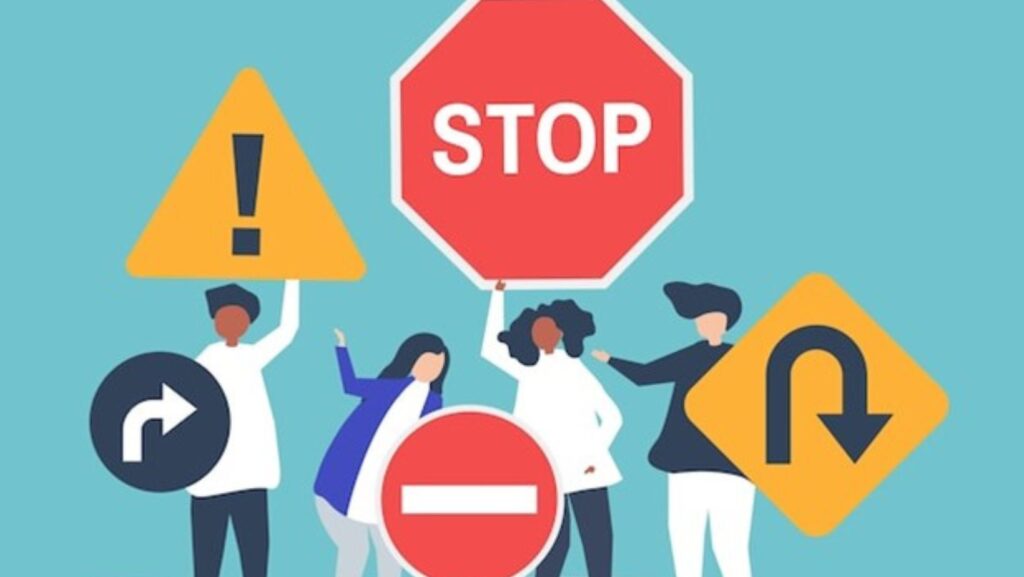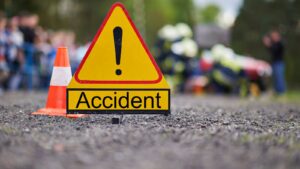
Knowing the right-of-way rules is crucial to safe driving and avoiding accidents. These regulations determine who has the legal right to proceed in various traffic situations, such as at intersections, roundabouts, or when merging. Following these rules reduces the likelihood of collisions and ensures a smoother flow of traffic.
Knowing what to do after an intersection accident is just as important as understanding the right-of-way rules. This awareness can help drivers better navigate the aftermath of an incident and ensure that they comply with legal and safety requirements.
Let’s get deeper!
Right-of-Way at Intersections
Intersections are some of the most common sites for traffic accidents due to the complexity of vehicles approaching from multiple directions. The right-of-way rules at intersections vary depending on whether stop signs or traffic signals control the intersection or are uncontrolled.
When facing a stop sign, drivers must yield to other vehicles and pedestrians already in the intersection or approaching closely from the opposite direction. If two vehicles arrive simultaneously, the car on the left should yield to the vehicle on the right.
For traffic lights, drivers must follow the signals, yielding to pedestrians crossing the street when making turns. In the case of an uncontrolled intersection, where no stop signs or traffic lights exist, drivers should slow down, approach with caution, and yield to the vehicle on the right.
Yielding to Pedestrians
Pedestrian safety is a crucial aspect of right-of-way rules. Drivers are expected to yield to pedestrians in crosswalks, whether marked or unmarked, especially at intersections. When making a turn, motorists must ensure that pedestrians have fully crossed their lane before proceeding.
In areas with heavy foot traffic, such as school zones or shopping districts, extra caution is necessary to avoid potential incidents. Failing to yield to pedestrians can cause severe legal consequences and, more importantly, pose a significant risk to pedestrian safety.
Right-of-Way in Roundabouts
Roundabouts are meant to enhance traffic flow and reduce the likelihood of collisions, but they require drivers to understand specific right-of-way rules. When approaching a roundabout, drivers must yield to vehicles already circulating within it.
This means slowing down upon approaching and allowing cars in the roundabout to proceed first. In multi-lane roundabouts, it is essential to choose the correct lane based on the intended exit. Always signal before exiting to inform other drivers of your movements.
Merging and Lane Changes
Merging onto highways or changing lanes requires attention to right-of-way rules to ensure safe and efficient driving. When merging, the vehicles already on the road have the right of way. Drivers entering from on-ramps should accelerate to match the speed of traffic and merge when a sufficient gap opens.
Abruptly forcing a merge can be dangerous and may cause rear-end collisions. When changing lanes, it is necessary to check mirrors and blind spots before signaling and moving over. Right-of-way rules dictate that drivers must yield to traffic in the lane they wish to enter.
Emergency Vehicles and Right-of-Way
Special rules apply when emergency vehicles such as ambulances, fire trucks, or police cars are on the road.

When an emergency vehicle approaches with lights flashing and sirens on, drivers must yield the right of way, move to the side of the road, and stop.
This regulation guarantees that emergency personnel can get to their locations without encountering any obstacles. Failing to yield to emergency vehicles not only breaks traffic laws but also potentially delays critical responses to emergencies.
Conclusion
It is essential to comprehend right-of-way regulations in order to drive safely and prevent collisions. These rules contribute to the smooth flow of traffic, the avoidance of accidents, and the protection of motorists, passengers, and pedestrians.
Always remember that safety comes before convenience. Keep an eye out and abide by these guidelines to handle any traffic situation with assurance. Safe travels!














